JAKE SCOTT has every reason to sit back and ride on the laurels of his famous director father. But that’s not who Jake Scott is. While he may have learned filmmaking, or grew an interest in it, at his father’s knee, Jake has forged his own path, most notably in the world of music videos helming videos for artists like The Rolling Stones, Soundgarden, George Michael, U2, Radiohead, The Smashing Pumpkins, R.E.M., and more. After beginning his career at age 14 as an uncredited stand-in on Ridley Scott’s “Alien”, Jake finished his studies and then by the early 90’s embarked on that career directing music videos. But the filmmaking bug bit him and he made his feature directorial debut in 1999 with the action-adventure/crime story “Plunkett & Macleane.”
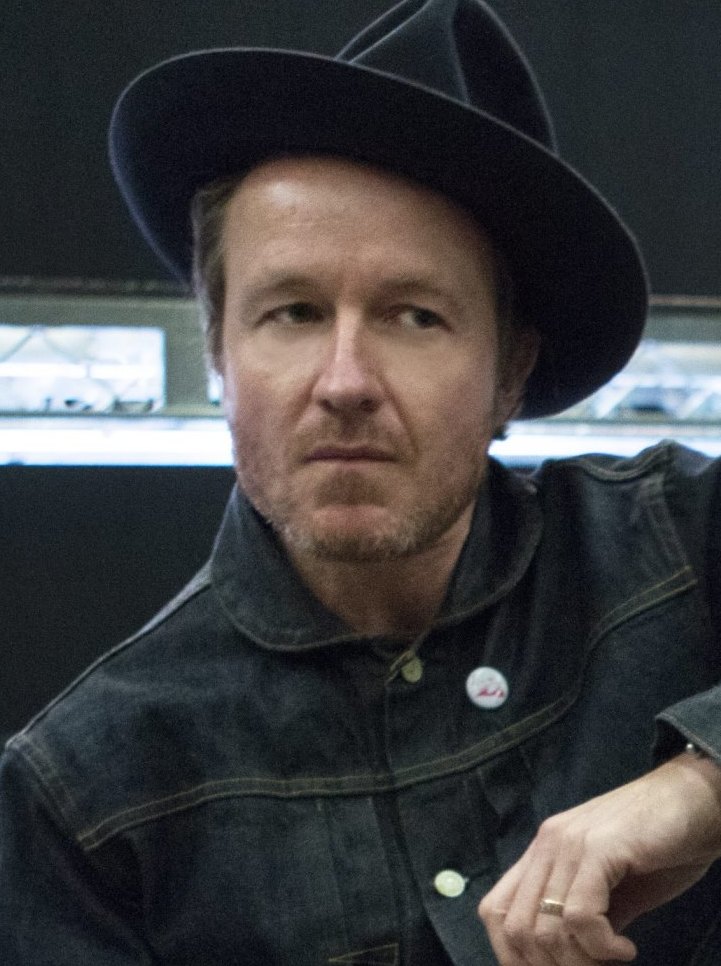
Continuing to dazzle us with music videos and television commercials, including a Budweiser Super Bowl commercial, Jake went back to feature films in 2010 with the drama “Welcome to the Rileys” starring Kristen Stewart, James Gandolfini, and Melissa Leo. An emotionally powerful film written by Ken Hixon, with “Rileys”, we saw a depth to Jake’s storytelling that embraced all the elements of filmmaking to create one unforgettable tapestry of a slice of Americana. But it took almost another decade before Jake delivered his next feature film; this time, AMERICAN WOMAN, starring Sienna Miller in what is undoubtedly the best performance of her career. It was worth the wait for Jake Scott to tell this story by Brad Ingelsby as Jake has left no stone unturned in bringing AMERICAN WOMAN to life. From the foliage of the region to location homes to casting to cinematography to score to casting, Jake once again explores a regional slice of Americana and the human condition with an intense character study that is riveting, compelling, and poignantly inspiring.
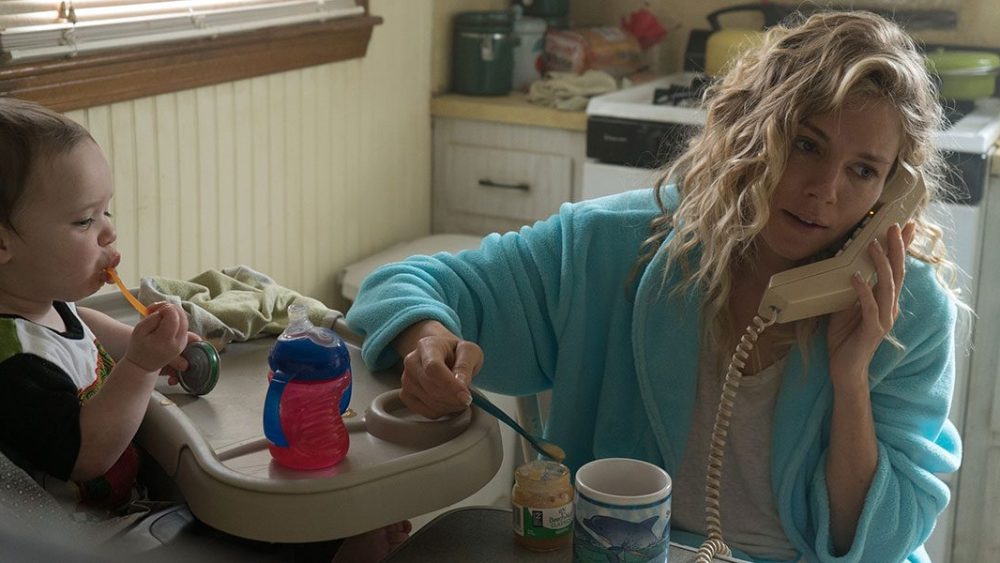
Set over a period of eleven years, AMERICAN WOMAN follows the story of single mother Debra Callahan who is forced to raise her grandson Jesse after the disappearance of her daughter. Opening in 2003 in a rural area of Delaware County in suburban Philadelphia, we meet Deb, her daughter, her grandson. Living across the street is Deb’s sister Katherine and her husband Terry along with their two sons, and Deb and Katherine’s mother Peggy. Deb is this side of a trainwreck as she cheapens herself and throws caution to the wind, desperate to “find a man.” Several years pass and the case for Debra’s missing daughter has gone cold, but Deb now has a boyfriend living with her and Jesse. He pays the bills but exacts a price in emotional and physical abuse of both Deb and Jesse. Interesting is the bond between Deb and Katherine and Terry which, despite differing opinions, has only strengthened over time. Giving Deb the support and courage to clean up her act and her life, through Katherine and Terry she meets Chris, the ideal man. But as time and marriage marches on, will Chris prove to be all they think he is and will Deb have the strength to stand on her own two feet?
Spanning approximately 11 years, we are captivated by AMERICAN WOMAN and by Miller’s performance. But it’s the attention to detail, the visual metaphor, the music, all the puzzle pieces which Jake Scott carefully assembles that bring this story to life with authenticity. His grasp of the human condition, as with “Welcome to the Rileys”, once again resonates with truth and compassion.
I spoke at length with JAKE SCOTT about AMERICAN WOMAN, his craftsmanship and storytelling, and how he managed to find Boston-area locations as stand-ins for the beautiful Brandywine area of suburban Philly.
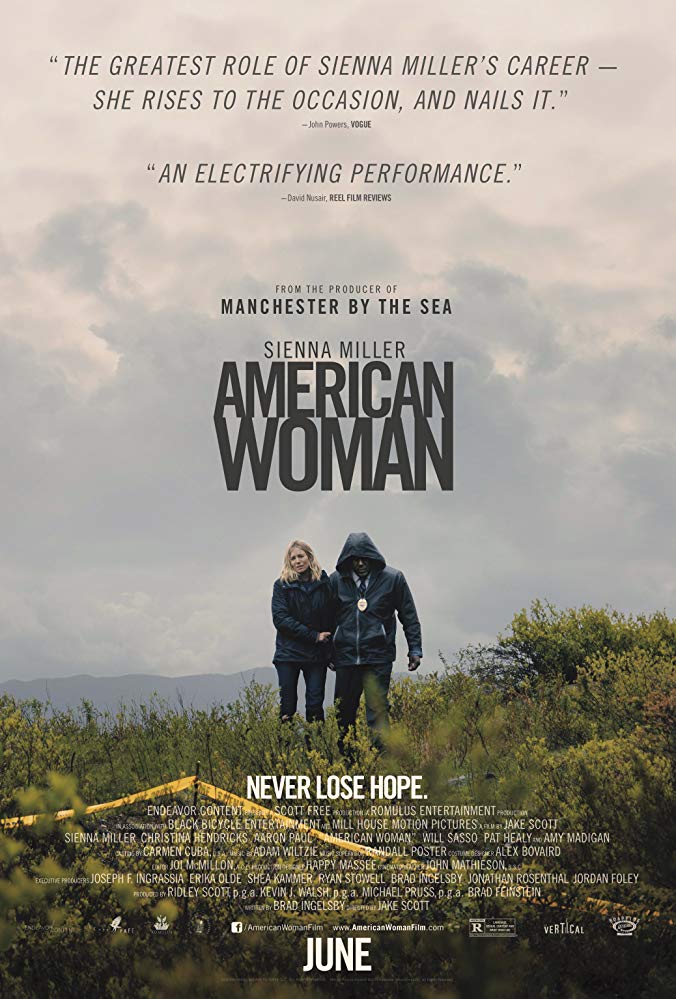
For my money, you got another winner here on your hands, Jake. I really love this film and what you did with it. And sitting and watching it, it felt like I was right back home, especially when I saw the maple leaves and foliage! That was a key.
Amazing! Thank you, thank you. That’s the best compliment. That’s it! That’s my day made. And yeah, the leaves? It was hard to find, all the combination of those things. We went out. I had a nature unit. and we went out, I had a nature unit like, you know, “Change the season! Quick, go find whatever!” You know, like you do … You’d find the seasons, whenever it was available.
Well, I am beyond impressed. I loved what you did with “[Welcome to the] Rileys.” You really tapped into a slice of American life and the human condition. And you do it again with this film. And I love it! The biggest thing for me, being that I’m from suburban Philadelphia where this is set, is the fact that you found a spot, locations in the Boston area no less, to mirror that section of Philly and Delaware County where you’ve got Brandywine Creek and Tyler Arboretum and all of the wooded areas with the maple trees, impressed me to no end! Then to have what Sienna [Miller] pulls off with the mannerisms, with the dialect, and your costume and hair, with the outfits, with the jewelry, with the nails, that is all so spot-on for that region.
Thank you. That’s it!
It is perfect. Regionally perfect. And it blew my mind that you were able to pull this off in the Boston area. I would never have known this was not Delaware County.
Wow! Thank you. Here’s the thing. The writer’s from Delaware, so he was a brilliant resource. Also, I went to Delaware [County] and had a look. Obviously, I went outside. I’ve got to go look and see and make sure we’re going to get this right. And I was so paranoid we were going to get it wrong. My production designer, Happy Massee, and Alex Bovaird who did the costumes, they’re both obsessively detail-oriented. So, that was a big part of it in building the vernacular, I suppose. I think it’s also not so distant from some parts of where I come from. Really. It’s blue-collar, we call it working class. But I think when people read the script, a lot of people thought that because of her, because of Deb, and how she is when you meet her, which is, she’s a party girl, and we all know people like that, who just can’t grow up, who let their kids down, who aren’t really there, emotionally available. They’re either narcissistic, or they’re just dysfunctional, alcoholic, addicted, sex addicted. T here’s so many people like this. Male and female. I felt that, on the page, there was this sort of, there was a judgment that I kept hearing. “They’re white trash,” right? And I’m like, “They’re not. They’re not white trash.” You’d think that’s not what these people are. They’re just good, honest, hard-working class, hard-working people. Katherine, and Terry, across the road. We were thinking about the timeline of this, the recession. We went through a bad recession. We’re post-9/11. That is the timeline of the story. But Cath does the bills. Terry’s in construction. He works really hard and they tighten their belts. So it’s all that stuff. There’s a sort of dignities to the characters, and of course, Deb grows through the film. And grows up through the film. So that story doesn’t necessarily only happen in Delaware County. Right? It could happen in Yorkshire, England. It can happen in Northern France, it can happen anywhere in the world. So, the people of that part of Pennsylvania, which I really do find there’s a lot of parallels between England and that part of America. Here, there’s no parallels. But there, there’s a lot of parallels.
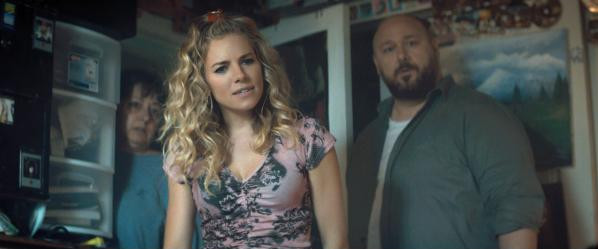
I still think it goes back to because of the fact the British colonized the region!
I do, too. And especially now I’ve spent as much time as in New England. I’m like, “Oh my God. This is what’s what it is. We are related.” We are related. They’re very welcoming in Massachusetts. But I felt very, weirdly connected to it because I felt very comfortable with the culture, and it was really interesting. It sounds logical, isn’t it? This film’s not going to get any awards for design or visual. But it’s all design and visual. It really is. Right down to the nails and the crib.
Oh, the nails! I knew girls like her, like Deb. And, it’s interesting when you say that nobody’s white trash, which is true. But whatever the reason, a lot of the women think or thought that this was how you go get a man; you put on all these trappings. I can tell you horror stories of women I knew in the region. So many mother-daughter battles and father-daughter battles because this was their daughter’s costume to go out and find a man to go take care of them, or to better their life. And I find it so striking in AMERICAN WOMAN because we see the costume coming off.
I love this interview! The point of the lingerie in the motel room thing. Alright. I’m a guy. I’m heterosexual. I have five kids. I’m a guy. So going into this film, I’ve got three daughters, and I think, “Okay. I’ve got to really approach this . . . There’s the male gaze and there’s the female gaze.” You know? I was like, “Okay, I got to really come at this, really come at this with a different viewpoint.” And catch myself … No, I’m not misogynistic, but catch myself because of how we are conditioned, socially; how our mothers conditioned us, how our fathers, how our peers, how other members of your sex condition you into behavior. Right? So I’m thinking about this, and I think, “Okay, we got Sienna in the cheapest lingerie you could possibly find. And it still looks too good.” And you’re thinking, “How do I get this …”? And all the guys involved in the film were a little bit . . . I had to educate them about this, and say, “Guys, if this scene is sexy, we fucked up.” Pardon my French. “If this scene’s sexy, then we’re too present in the decision.” Because there isn’t nothing sexy about this! She’s in the cheap motel wearing two, three dollar lingerie, with a married man who is drunk. It is that close to being paid for sex, right? And it’s depressing. And that was the thing that sort of opened the whole of my approach. Once I made that decision I was like, “Oh! That’s it! Her growth can only be seen through her own experience.” So, she disappoints herself. That’s what that look in the mirror is, when she’s in there in the bathroom. She’s almost like, “Here we go again. I got to do this again.” And it’s, from there to that ending, where she’s clear, and she’s present.
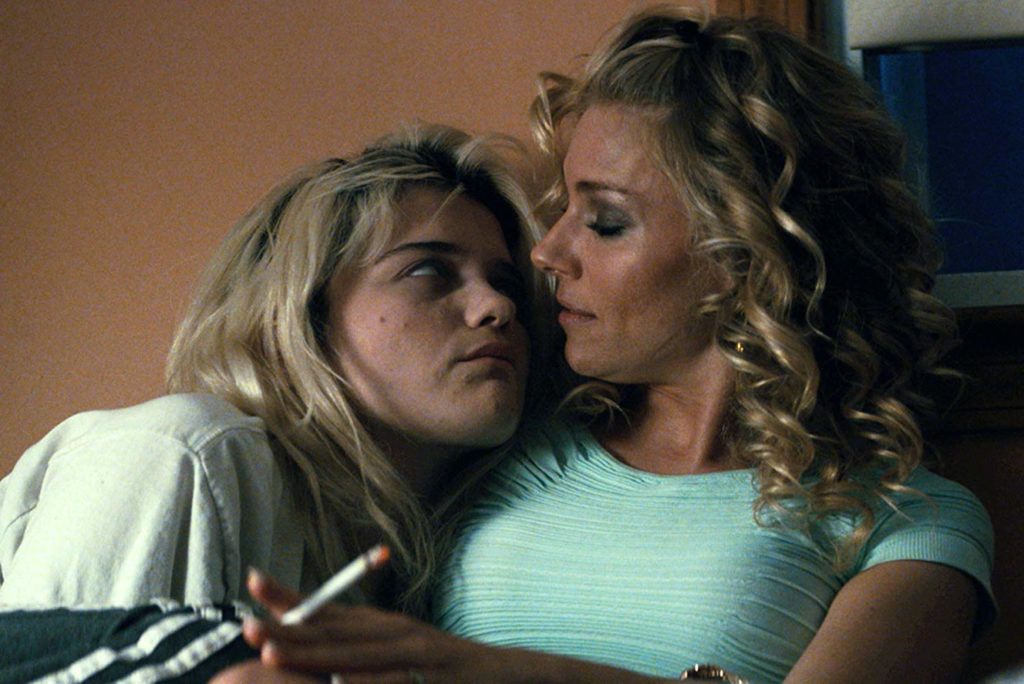
And the makeup is gone. The nails are gone, the makeup’s gone, and we see that visual transformation that is so incredible, Jake, because slowly, with each point, each step that she takes … the curls go, cuts the hair five years later. She’s still trying to find who she is. But, she’s improving. And a lot of those trappings, that costume, is gone. And, by the time we get to that third act, and she’s standing there, and there’s no makeup, and the hair is totally natural, and we finally see her. Watching this unfold is just glorious, Jake!
Right. Amazing. Thank you! That’s exactly it! The makeup’s gone, and then nails are gone.
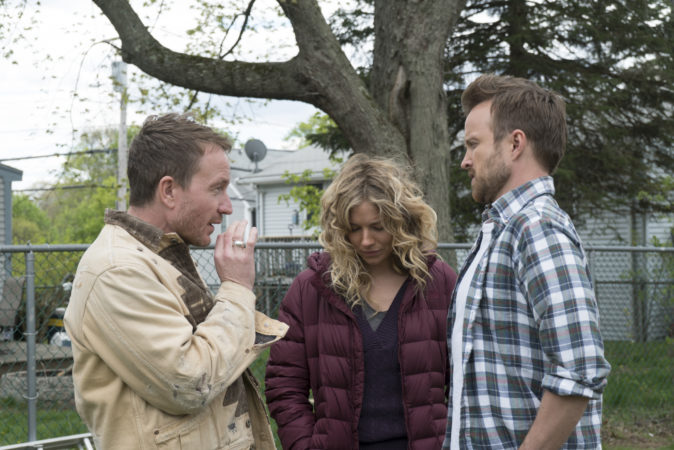
And Joi’s [McMillon] editing!
Yeah, she’s killer. She’s killer. That woman. . . I’m telling you. I sat and watched – I was undecided about editors, and I was like, “There’s too many men. . .”. That was the other thing, it was like, male director, male writer, male DP. And male productions behind it. And interestingly, there were quite a few daughters amongst us as men as fathers. But, I was like, “Alex Bovaird. I need a point of view in here that’s balanced.” And, boy, did I get it with Joi, you know? I’m watching the screen in “Moonlight” and about a third of the way in, half or 30 minutes, I was like, “This is the editor. This is it. This is the editor. I’ve got to have her.” And she came in for an interview, and we got on like a house. And she giggles, and I loved that. That was it. There’s not anything but complete and utter adoration for her as the craftswoman and artist that she is.
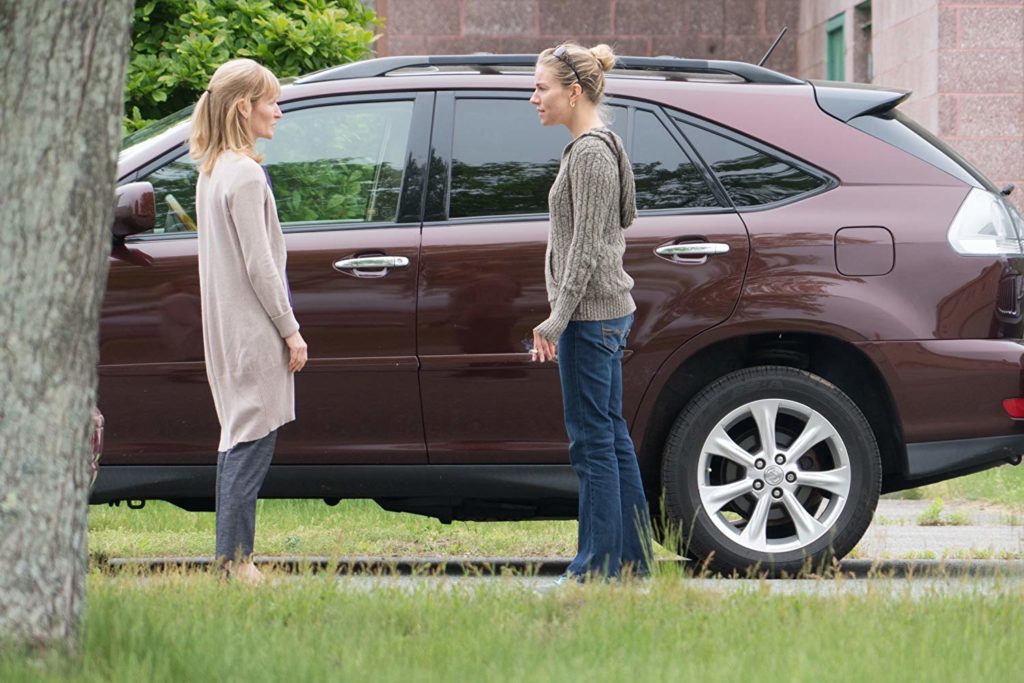
Joi is great. Something that I also love, and it’s a testament to you, to your cinematographer John [Mathieson], and to Joi, is that in so many of these scenes we’ve got the whole family in the house, in one room. And I know the size of these rooms, in these houses. It is not big. Not by any stretch of the imagination. But you have all these people, and granted the fact you picked houses that you’ve got that second level with the stairs is your lifesaver for these interiors.
Man, you notice everything! It was the only way we could do it. And we kept looking at these houses, and we kept going back to that particular … Because I had it in my head, right from the get-go, that it’s a cul-de-sac. There’s only one way in, and one way out. Because it’s like the bottom of a test tube. Kath loves the security of the cul-de-sac, and Deb is trapped. It’s like a Venus flytrap.
Plus, the metaphoric dead end.
There it is! But Kath loves that it’s the dead end. They get married there. But the houses themselves, as you correctly point out, that was it. That was it. And you could use that landing level as a stage, as Chris [Aaron Paul] does, in his poor attempt at seduction.
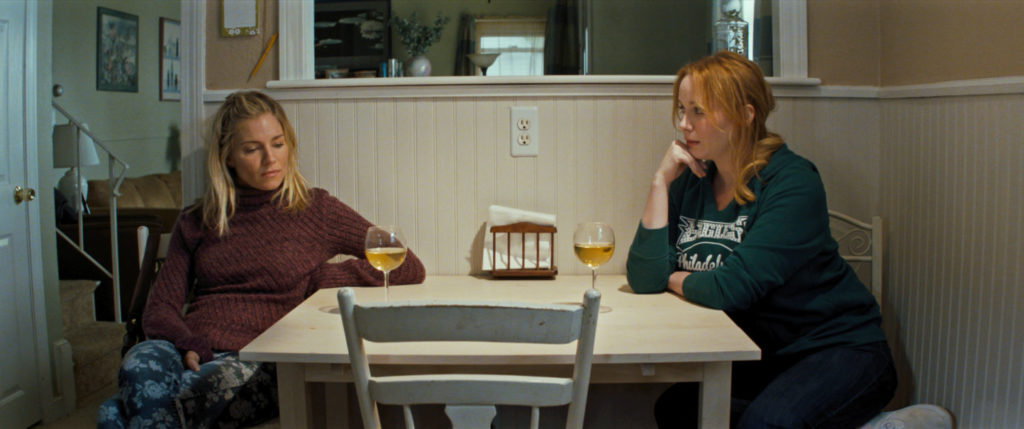
And in Kath’s house, Amy Madigan’s character of Peggy, you got her in there, to keep her in the frame. All of those houses were built in the 1960s along that northeastern seaboard in the suburbs. My parents’ house, our whole neighborhood and those surrounding us, were built similarly with landings like that.
Yeah. 1962, the first part of the 60s. The couple that is Kath’s house, Jack and Dotty, they’re in the film. You see them. They’re sort of distant family members in the film. This very white-haired lady, and Jack. They’re amazing. That was their house. They bought that house when it was new. They brought up their kids in that house. That street where Deb and Chris get married, that is their [Jack and Dotty] garden. It was those people. That’s who they are. And it was the pictures on the walls, and everything. So I was like, “You two have got to be in this film. You’ve got to be in the film.” “Nah, we can’t do it … ” And I was like, “No, you’re going to be in this film.” And so, they never left. I always just talked to them at lunchtime, just stuff like, “Do you not feel like you want to go somewhere? . . .” You know? “No, no, this is, we’re happy here. We are happy and we are glad to be here.” That was it for me. It was like the contrast between Kath’s feelings about it and her sister’s feelings, and the two of them, and then Deb leaving at the end, how hard that is for Kath. And they’re going to talk on the phone in like two hours! That’s the funny thing. And Kath will go and see her in a week. And that’s “the thing”.
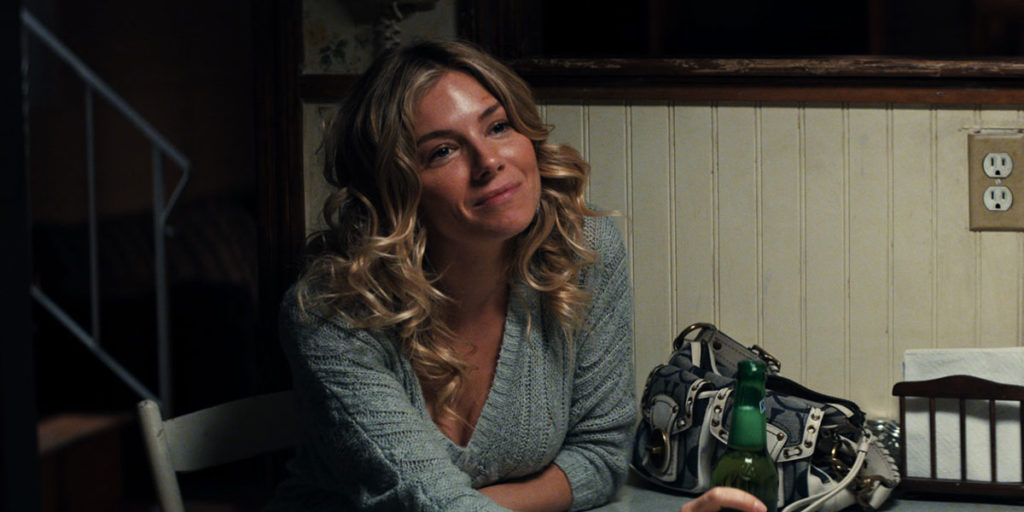
That umbilical cord. It is like they’re twins. That umbilical cord does not break. I have a brother and sister like that with each other. So, I totally get this, in this film. John’s lighting design is so exemplary as a means to distinguish between Kath’s and Deb’s houses. We’ve got the dirty look, the yellow look, in Deb’s house. Doesn’t want to turn the lights on, wants to keep everything shadowing. And Kath, you’ve got the beautiful kitchen window, and you’ve got light coming in. Beautiful contrast, even though the houses are the same design!
They’re exactly the same floor plan. There it is the exact same house. It’s exactly the same. And all it was is that. Yeah, you saw it, you saw it as we intended it. And it did feel different. You stood in that house, and it did feel different. No one liked the days when we were shooting in Deb’s house. Everybody, the crew, got grumpy with each other. But soon as we were in Kath’s house, people were making tea for each other and bringing chocolates to set, and it was like, “I’ll let everybody hang out in the sofa.” It was really interesting, the psychology of that.
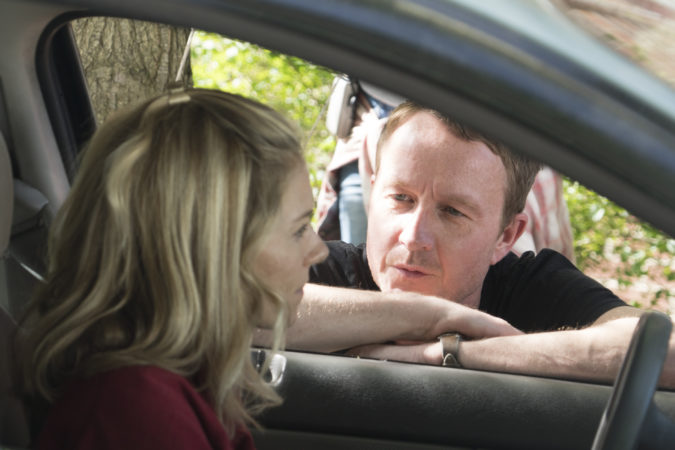
Before I am taken away, Jake, something that fascinates me is that you make these two very significant films about the human experience, the human condition. “Welcome to the Rileys”, a portion of Americana. AMERICAN WOMAN, a portion of Americana. Yet, here you are, a British director. What is the appeal of these American stories?
I could’ve just easily made them both in the United Kingdom. I live here. And, I think I’m a great admirer of a particular period of American cinema as well. I don’t even have to explain that. But, also, as a European, I was always fascinated by Wim Wenders, and British directors, European directors, that have come here, and made, told American stories. I think there’s a sort of viewpoint that we might have that’s still fascinating to me as a culture. I think that’s what it is. I’ve just a fascination with the culture. And I love this country and I find truth in these live. Because I’ve got a famous film director as a father [Ridley Scott] doesn’t mean I don’t have a rest of a family who have normal jobs. You know? I’ve lived in Beverly Hills my whole life. Went to school in London. Came here when I was 26. Yes, I’ve had a fairly, very privileged life, but. . . You know, my mum lived on a cul-de-sac for 25 years, and it’s in the suburbs of London. So it’s not through anything else than just the humanity of the characters in these stories about the truths, and the truth of living. I love it. It just fascinates me. Don’t get me wrong, I wouldn’t mind doing a film with a car chase, or something, you know. But it would still be character-driven!
by debbie elias, exclusive interview 06/06/2019












